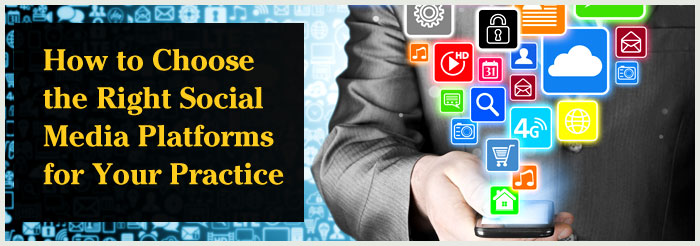While hashtags and emojis may seem far removed from the daily business of helping patients, the truth is many of your current and potential patients are on social media, and it’s too direct of a marketing strategy to ignore. Adding social media to your repertoire of healthcare marketing strategies can help drive traffic to your site and through your doors – and also provide a real source of information for you about your patients. Social media marketing can be overwhelming. With all of the platforms out there, how are you supposed to know which ones are worth your time and money? Use our simple steps to focus your social media efforts, engage current and new patients and increase your revenue.
- Get clear on where your target audience hangs out online. To do that, first get clear on who your target audience is. Who is your ideal patient? What kind of patient can you help the most? Look at the social media accounts of practices who serve the same type of patient. Also, consider emailing your patients with a quick, three-question survey: Where do you spend most time when you’re on social media? What is your favorite platform and why? Where would you prefer to engage with our practice?
- Get clear on your end goal. While the goal of every business is to generate revenue, we encourage you to get a little more specific when thinking about your goal for using social media. Maybe your goal is to encourage followers to become part of your practice culture. Maybe you want more foot traffic in your optical shop. Maybe you want to promote your new online options for buying glasses. Maybe you’re a long-established practice and want to remind followers of your relevance and authority. Determining one or two specific goals will help you choose the right social media platforms.
- Track your results. According to Hubspot, when measuring the effectiveness of your practice’s social media, use these top three metrics:
- Reach: The number of followers you have on each of your social media platforms. This is the number of people you reach with a post at any given time.
- Engagement: The number of people who have interacted with the content you post by commenting, liking, clicking a link, etc.
- Leads: The number of people who have interacted with your content by doing something like clicking a link to your website and then converted into a new patient or returning patient. Remember, you define what conversion means on your social media platforms.

